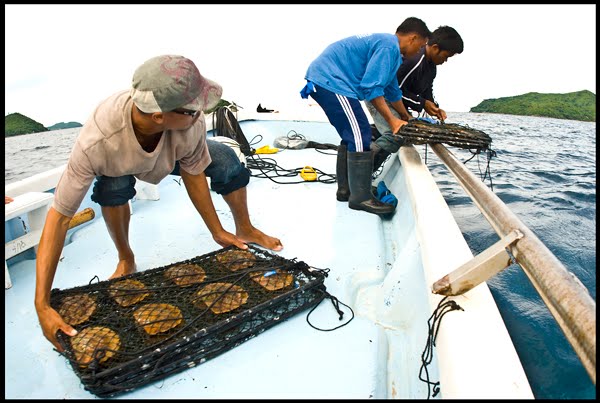
The clean waters of Palawan have attracted investors to engage in pearl farming, particularly in the island municipalities.
Palawan Council for Sustainable Development Staff (PCSDS) Officer-in-Charge (OIC), Executive Director Romeo Dorado said there are about 11 companies operating pearl farms in the province.
He said the pearl farms are located in the municipalities of Balabac, Taytay, San Vicente, Dumaran, Busuanga, Culion, Linapacan and Coron.
A total of 44,337 hectares are under lease for pearl farming by the concerned municipal governments to various operators. The lease period is generally 25 years, he said.
PCSDS data showed that a pearl farm operator with a leased area of one hectare usually earns about P42,000 per year while the host LGU earns only about P50-350 per year.
Ecologically, however, pearl farm operations have the effect of improving the resource condition of the leased marine area.
This could therefore bring about an increase in fish stock in the area with possible spillover effect in the surrounding marine areas.
Among the pearl farm operators in Palawan is the Jewelmer International Corp., which is reportedly owned by business magnate Eduardo "Danding" Cojuangco and his Frenchman business partner Jacques Branelle.
The world's largest pearl, the 9.45-inch Pearl of Allah was found by a diver from Palawan in 1934.
The clean waters around the island of Palawan in the Philippines Sea have attracted investors to pearl farming for decades. There are several pearl firms actively operating at Palawan, but only one cultivates the exquisite and rare golden pearl – Jewelmer,
Jewelmer is the only pearl producer in the world that has successfully produced pearls with a rich, natural golden color. Through decades of research and biotechnology, Jewelmer was able to perfect the breeding process that produces gold-lipped Pinctada maxima pearl oysters capable of growing large, lustrous, golden pearls.
This deep, rich color can only be found in South Sea pearls produced in the Philippines.
This deep, rich color can only be found in South Sea pearls produced in the Philippines.
Pearls are cultured by transplanting a tiny piece of mantle tissue of an oyster shell into a the shell of a young oyster. This graft forms a pearl sac and precipitate calcium carbonate into this pocket. Over time, this grows into a pearl. It takes 2 to 5 years for a pearl to mature.

"Cultivation of pearls is very time-consuming process," explains Jacques Branellec, managing director of Jewelmer. "Any change in temperature and water conditions can affect the oysters. For 38 years I have been in cultivation of pearls, but I'm always learning something new."
"Cultivation of pearls is very time-consuming process," explains Jacques Branellec, managing director of Jewelmer. "Any change in temperature and water conditions can affect the oysters. For 38 years I have been in cultivation of pearls, but I'm always learning something new."
Forgive me but I had no idea there were gold pearls that grew in the oysters...always thought that they were covered white pearls.
ReplyDeleteThey are absolutely beautiful.